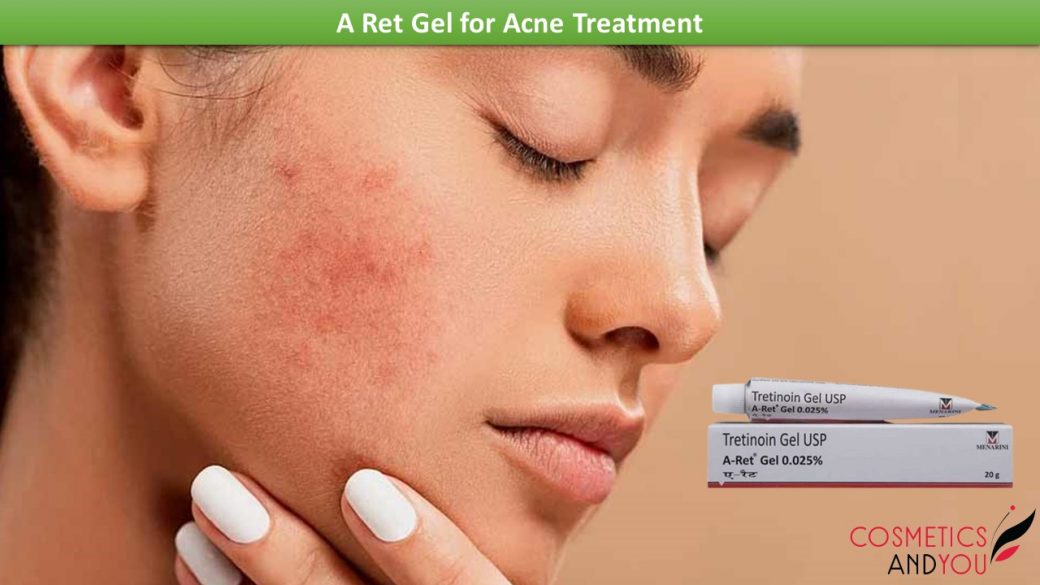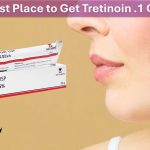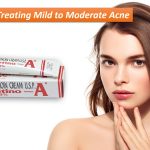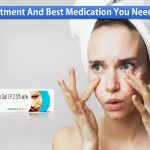Tretinoin is a supercharged skincare ingredient with loads of benefits. It smoothens fine lines and wrinkles. Skin complexion becomes more even. Pores visibly shrink. It also offers your blackheads a breakout goodbye. These super qualities make tretinoin worthy of a spot in your skincare regimen.
Tretinoin is a topical retinoid, the more potent cousin of over-the-counter retinol, and it has over 50 years of research to back up its safety and effectiveness. Furthermore, tretinoin is the only FDA-approved retinoid for photoaging (signs of accelerated skin aging like wrinkles, enlarged skin pores, and uneven skin tone due to repeated sun exposure.
How to achieve results with tretinoin?
Tretinoin causes a significant reduction in the appearance of fine wrinkles by boosting collagen production. Collagen is a protein that provides a supple support network for your skin. The production of collagen drops by 1% every year after the age of 20, resulting in skin aging. A research study showed that tretinoin boosts collagen in the skin by up to 80% over 10 to 12 months of nightly use.
- Uneven skin tone
Tretinoin evens out skin tone by dispersing melanin granules. Melanin is a natural pigment that gives rise to skin, hair, and eye color. Its overproduction forms brown patches on your skin that are darker than your usual complexion. Uneven skin tone or hyperpigmentation can occur due to sun damage, hormonal imbalances, and skin injury. Most patients find that their skin is already looking brighter and more even after three months.
- Large skin pores
Skin pores become larger when excessive oil, dirt, and dead skin cells accumulate in pores, making them bigger. A ret .1% Tretinoin minimizes skin pores by increasing skin cell turnover and boosting exfoliation, which clears dirt from the pores and allows them to shrink to their normal size. For many people with enlarged pores, tretinoin helps achieve smoother skin and minimize skin pores.
- Rough skin
When dead skin stays longer, it can cause skin dryness and roughness. Tretinoin is considered a gentle chemical exfoliant, making them smoother by shutting dead skin cells out of pores. Once nightly, the application provides hydration, firmness, and elasticity to the skin to make it feel smoother.
- Acne
There are two major types of acne: inflammatory and non-inflammatory. Tretinoin is effective at treating both kinds of acne. It helps with both kinds, but depending on the severity, your dermatologist might recommend a treatment regimen that combines multiple solutions.
Inflammatory acne occurs due to the clogging of pores, but along with oil and dead skin cells, bacteria get stuck in the skin pores, too. This can lead to the formation of red, inflamed pimples that are painful. Non-inflammatory acne, or comedonal acne, includes your typical whiteheads and blackheads. Whiteheads and blackheads develop when dead skin cells get trapped in the skin pores, interfering with natural oil production and ultimately causing a buildup.
The retinoid preparation minimizes the appearance of both types of acne by gently exfoliating the buildup in skin pores. In addition, it creates an uncomfortable environment for bacteria that are responsible for causing acne. Using this product as part of a regular skincare routine can help keep acne away with rapid skin cell turnover and exfoliation. As per your condition, your dermatologist may also suggest using an antibacterial for inflammatory acne. In severe cases, it is important to consult a dermatologist to develop the most effective acne treatment for your skin. Within a few weeks, a user may see visible improvement in the number and size of pimples. They may see significant improvement in the skin’s appearance with additional improvements in uneven skin tone.
Expectations from tretinoin
Like any other skin care treatment, results take time and often come with side effects. But a user may have smoother and healthier skin. With one nightly application, most people begin to see results around six weeks. If you are applying, it is every two to three days; you may start seeing results after about ten weeks. If used once a week, it could take up to three months. Every individual’s skin is different, and results may vary.
Side effects
During the initial weeks, you might develop temporary skin irritation, like dryness, peeling, or sensitivity, as your skin gets used to its new retinoid formulation. If you have acne-prone skin, you might develop purging, when the buildup of existing acne surfaces is faster due to increased skin cell turnover. All these side effects are temporary and resolve with time and proper care. To reduce the incidence of effects, begin with a low concentration every third night. One can also reduce the application as tolerated. Always keep in mind that a higher concentration isn’t always better. Too high can cause skin irritation. Plenty of the products can have an effect.
There is no size-fit solution when it comes to achieving beautiful skin. Finding the right frequency for your skin might take some time, and you might see results at different times than someone else. You can buy tretinoin .1% gel online.





